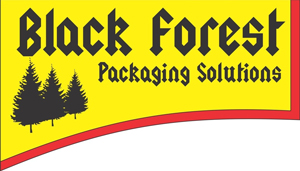Packaging is an integral part of product delivery, and proper packaging can make all the difference in how a product is received. Many types of packaging are available, but one of the most versatile is flexible packaging.
Read on to learn more about flexible packaging equipment solutions.
1. Types of Flexible Packaging Equipment
- Heat Sealing Machines – Heat-sealing machines are an essential part of the flexible packaging process. With heat, pressure, and time, these machines create an airtight seal on packages to protect their contents from damage or contamination. Heat-sealing machines can seal snacks, medical products, pharmaceuticals, and more.
- Form Fill and Seal Machines – Form fill and seal machines create a flexible package around a product by filling it with material and sealing the edges. These machines can create bags, pouches, tubes, trays, and lids. They’re great for creating custom packaging with unique shapes, sizes, and materials.
- Printers and Coaters – Packaging must be attractive and functional, so printers and coaters are used to apply designs or coatings to flexible packaging materials. These machines can print images, text, logos, or other designs onto flexible packaging materials in various colors. They can also apply coatings or finishes, like gloss, matte, or texture, to create a unique look and feel.
- Vacuum Sealers – Vacuum sealers pack products into a vacuum-sealed bag. This creates an airtight environment that keeps food fresh for longer and protects other products from moisture, dust, and other contaminants. Vacuum sealers are great for packaging anything from snacks to electronics.
2. Types of Flexible Packaging Materials
Materials used in packing solutions USA come in various forms, from thin plastic and foil to woven fabric and paper. Each type provides different benefits, so choosing the suitable material for your product is essential.
- Polypropylene – Polypropylene is one of the most common types of flexible packaging material. It’s lightweight and strong, making it perfect for food packaging, medical supplies, and more. Polypropylene is also moisture-resistant and heat-sealable, keeping products fresh and secure.
- Polyethylene – Polyethylene is another popular type of flexible packaging material. It’s strong, lightweight, and translucent, making it ideal for wrapping or sealing products. Polyethylene is also resistant to heat, moisture, and punctures, so it can keep products secure during shipping or storage.
- Laminate – Laminate is a combination of two or more bonded materials. This packaging material can be tailored to provide specific characteristics, like strength, flexibility, or moisture resistance. Laminate is sumptuous for packaging products that require specific performance characteristics, like medical supplies and electronics.
3. Types of Flexible Packages
There are many flexible packages, from bags and pouches to lids and trays. Depending on the product, the right package can protect it during shipping and storage while creating an attractive presentation.
- Stand-up Pouches – Stand-up pouches are ideal for products that need to be seen or easily accessed, like snacks, cosmetics, and pet food. These pouches are usually made from plastic or laminate and sealed with a zipper for easy access.
- Pillow bags – They can be made from plastic, polyethylene, or laminate material and are ideal for packaging food items like snacks, cookies, cereal, and more. Pillow bags protect the product and keep it fresh longer because they create a tight seal.
- Foil Pouches – Foil pouches are great for products that need extra protection from oxygen and moisture, like medical supplies and pharmaceuticals. These pouches can be sealed with heat or a zipper, creating an airtight environment for the product.
- Side seal bags – Side seal bags are usually made from polyethylene or laminate material and can be sealed with heat or a zipper.
- Resealable Bags – Resealable bags are perfect for products that need to stay fresh, like cereals, nuts, and dried fruits. These bags come with a zipper closure so that they can be easily opened and resealed multiple times.
- Lidding Film – Lidding film is a packaging material made from plastic or laminate. It covers the top of containers or trays and is sealed with a heat-sealing machine.
4. How Does a Flexible Packaging Machine Work?
The process of packaging with flexible equipment typically begins by placing a roll of plastic or foil into the machine. The material is then fed through a series of dies, which cut it to the desired shape and size. Then, the edges are heat-sealed together, creating an airtight seal so that no moisture can escape during shipping. After the product is inserted into the package, a vacuum sealer removes any air and creates an optimal seal. Finally, the package is labeled and ready to be shipped.
Use the right packaging solution to create a tight seal and protect your product from oxygen and moisture damage during shipping and storage. Our team at Black Forest Packaging can help you choose the right type of flexible packaging option for your needs and show you how to use our equipment so that your products look great and stay safe.


Recent Comments